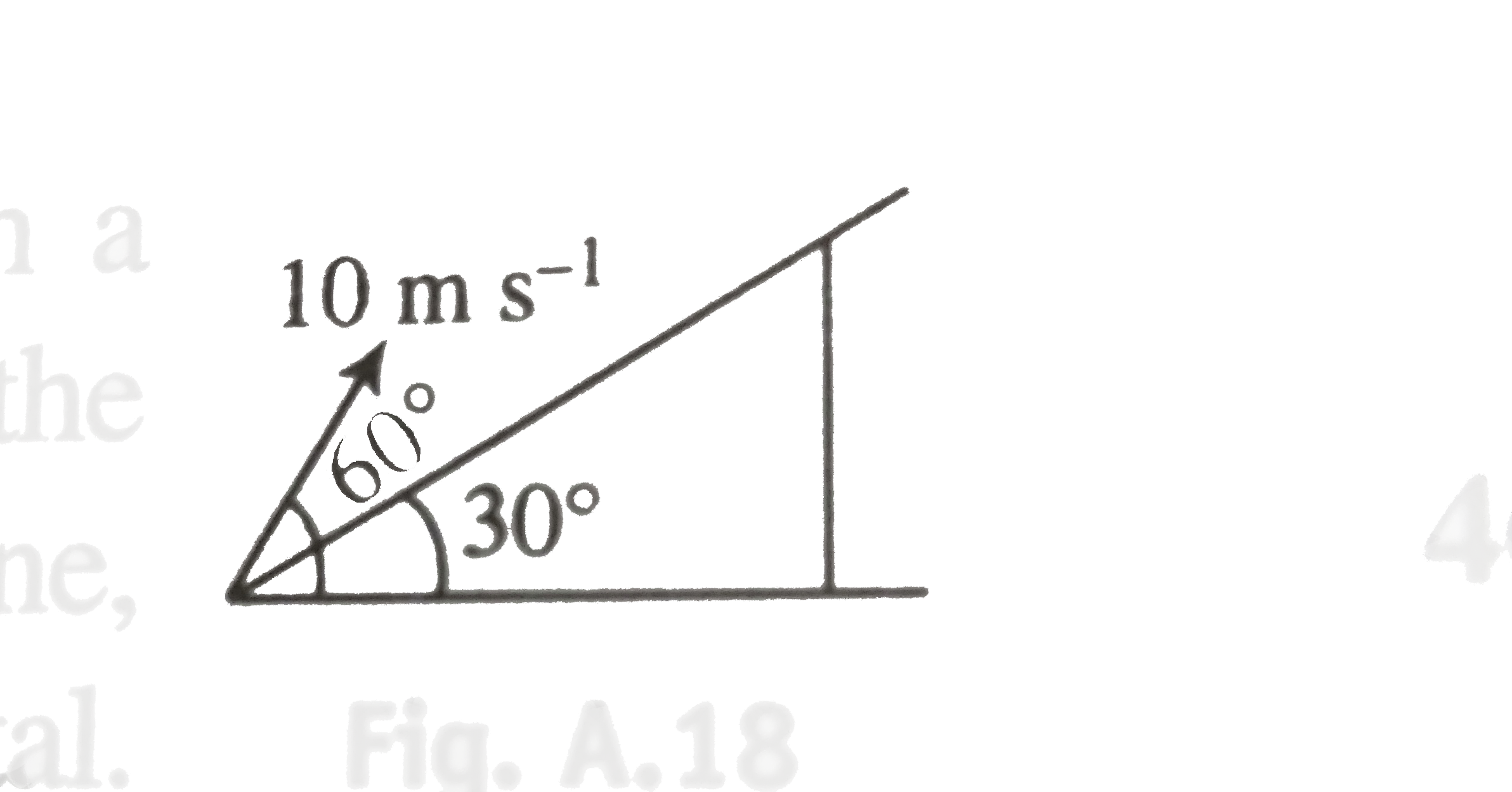A car weighing 100kg is on a slope that makes an angle 30° with the horizontal. The component of car's weight parallel to the slope is
(g=10ms−2)
500 N
1000 N
15,000 N
20,000 N
The correct Answer is:A
To solve the problem of finding the component of the car's weight parallel to the slope, we can follow these steps:
Step 1: Identify the given values
- Mass of the car (m) = 100 kg
- Angle of the slope (θ) = 30°
- Acceleration due to gravity (g) = 10 m/s²
Step 2: Understand the forces acting on the car
The weight of the car (W) can be calculated using the formula:
W=m⋅g
This weight acts vertically downward.
Step 3: Calculate the weight of the car
Using the values from Step 1:
W=100kg⋅10m/s2=1000N
Step 4: Resolve the weight into components
The weight can be resolved into two components:
1. Component parallel to the slope: W∥=W⋅sin(θ)
2. Component perpendicular to the slope: W_{\perpendicular} = W \cdot \cos(\theta)
Since we are interested in the component parallel to the slope, we will use the first equation.
Step 5: Calculate the component of weight parallel to the slope
Substituting the values into the equation:
W∥=W⋅sin(30°)
We know that sin(30°)=12:
W∥=1000N⋅12=500N
Final Answer
The component of the car's weight parallel to the slope is 500 N.
---
- Mass of the car (m) = 100 kg
- Angle of the slope (θ) = 30°
- Acceleration due to gravity (g) = 10 m/s²
The weight of the car (W) can be calculated using the formula:
W=m⋅g
This weight acts vertically downward.
Using the values from Step 1:
W=100kg⋅10m/s2=1000N
The weight can be resolved into two components:
1. Component parallel to the slope: W∥=W⋅sin(θ)
2. Component perpendicular to the slope: W_{\perpendicular} = W \cdot \cos(\theta)
Substituting the values into the equation:
W∥=W⋅sin(30°)
We know that sin(30°)=12:
W∥=1000N⋅12=500N
The component of the car's weight parallel to the slope is 500 N.
Similar Questions
A man pushes a 80 N crate a distance of 5.0 m upward along a frictionless slope that makes an angle of 30∘ with the horizontal. The force he exerts is parallel to the slope. If the speed of the crate increases at a rate of 1.5 then the work done by the man is :
View SolutionA person in a wheelchair is moving up a ramp at constant speed.Their total weight is 900N. The ramp makes an angle of 37∘ with the horizontal. Calculate the component of its weight parallel and perpendicular to ramp.

View SolutionA body is projected with velocity 24 ms−1 making an angle 30° with the horizontal. The vertical component of its velocity after 2s is (g=10ms−1 )
View SolutionA mass of 2kg lies on a plane making an anged 300 to the horizontal. Resolve its weight along and perpendicular to the plane. Assume g=10ms−2.
View SolutionA boy wants to hold a 50 kg box on a snow covered hill. The hill makes an angle of 30∘ with the horizontal. What force the boy must exert parallel to the slope ?
View SolutionA projectile is projected from the ground by making an angle of 60∘ with the horizontal. After 1 s projectile makes an angle of 30∘ with the horizontal . The maximum height attained by the projectile is (Take g=10ms−2)
View SolutionA body is projected down from height of 60 m with a velocity 10ms−1 at angle 30∘ to horizontal. The time of flight of the body is [g=10ms−2]
View SolutionA stone is projected from the top of a tower with velocity 20ms−1 making an angle 30∘ with the horizontal. If the total time of flight is 5s and g=10ms−2
View SolutionA bullet is projected upwards from the top of a tower of height 90 m with the velocity 30ms−1 making an angle 30∘ with the horizontal. Find the time taken by it to reach the ground is (g=10ms−2)
View SolutionA particle is thrown at time t = 0 with a velocity of 10ms−1 at an angle 60∘ with the horizontal from a point on an inclined plane, making an angle of 30∘ with the horizontal. The time when the velocity of the projectile becomes parallel to the incline is

View Solution
